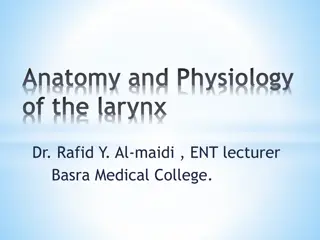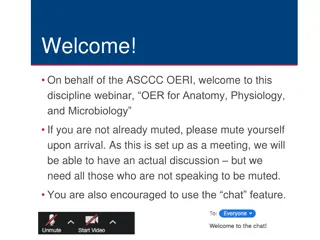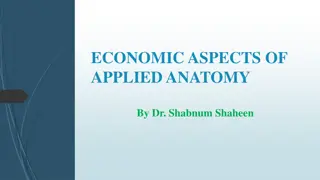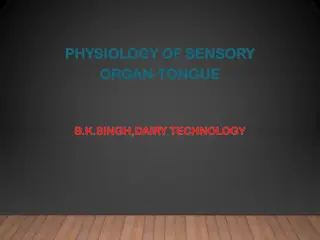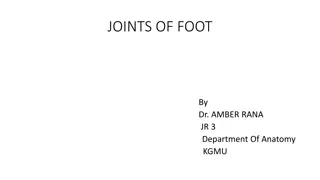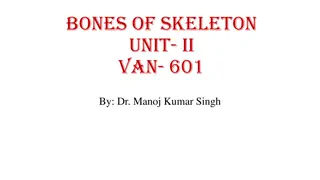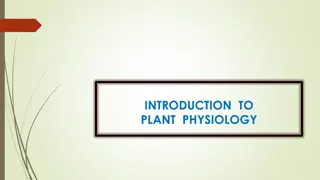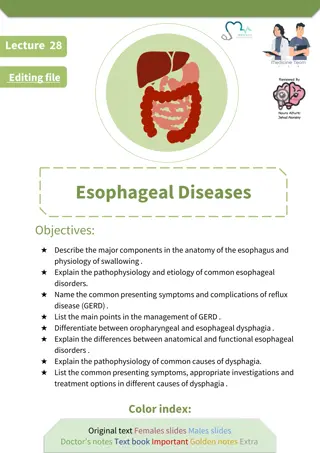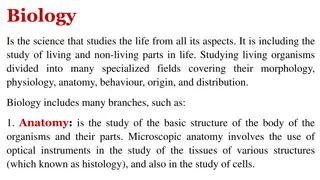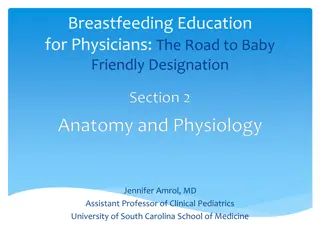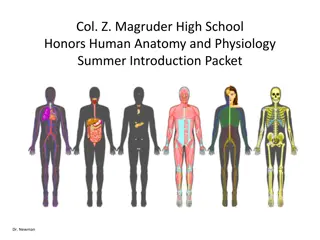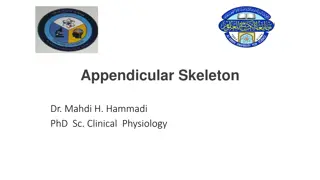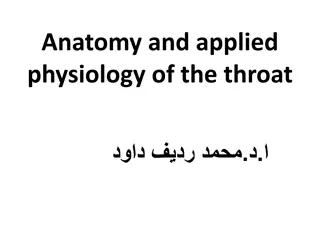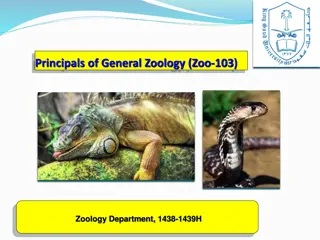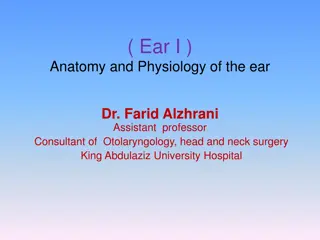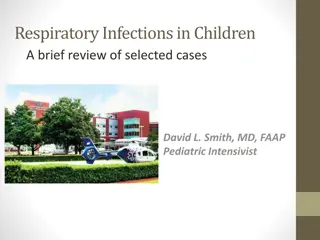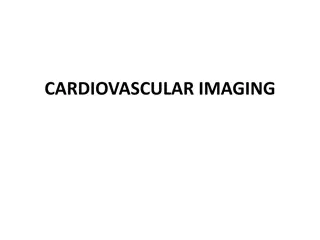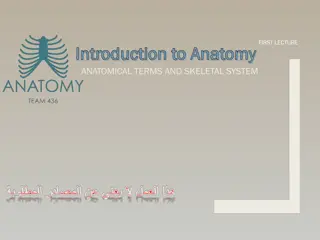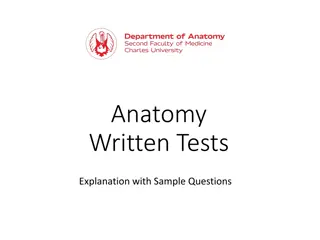Overview of Human Anatomy and Physiology
In this detailed description, discover the key components of the human body including the digestive system, skin, bones, and circulatory system. Learn about the functions of organs such as the liver, stomach, small intestine, heart, and more. Explore the role of structures like veins, arteries, cartilage, and ligaments. Gain insights into the complex systems that keep our bodies functioning optimally.
Download Presentation

Please find below an Image/Link to download the presentation.
The content on the website is provided AS IS for your information and personal use only. It may not be sold, licensed, or shared on other websites without obtaining consent from the author.If you encounter any issues during the download, it is possible that the publisher has removed the file from their server.
You are allowed to download the files provided on this website for personal or commercial use, subject to the condition that they are used lawfully. All files are the property of their respective owners.
The content on the website is provided AS IS for your information and personal use only. It may not be sold, licensed, or shared on other websites without obtaining consent from the author.
E N D
Presentation Transcript
By Dr.Hesnaa Saeed AL-Mossawi
Mouth :Mechanical digestion = chewing and Chemical digestion = enzymes found in saliva Pharynx (throat) Epiglottis: Small flap that closes over the opening of the respiratory system when swallowing, preventing food from entering the airway. Esophagus : Muscular tube connecting the mouth to the stomach Liver :Produces bile, a substance that helps break down fats Gall Bladder: Stores bile produced by the liver Stomach :Muscular pouch like organ where involuntary muscular churning and chemical digestion occurs
Small Intestine :Narrow muscular tube where digestion of food is completed with the help of enzymes secreted by the liver and pancreas Villi (plural: Villus): Little projections in the lining of the small intestine that function in the absorption of digested food Large Intestine (colon): Muscular tube where water and salts are absorbed; material spends 18-24 hours here Appendix :Tube like extension off of the large intestine Rectum: The last part of the digestive system, feces are eliminated from the rectum through the anus Pancreas: Secretes enzymes to help break down carbohydrates, proteins and fats
Skin Epidermis: outermost layer of skin covers the surfaces of the body Dermis: inner layer of skin Contains blood vessels, nerve cells, hair follicles, sweat and oil glands Hair, Skin and Nails Made up of Keratin Pigment of skin and hair Controlled by melanin Sweat Produced to help maintain homeostasis Sabecious Glands
Bones :Produce blood cells Red Marrow: Produce red and white blood cells Yellow Marrow :Consists of stored fat Joints Found where two (2) bones meet Cartilage :Surrounds the end on bone to prevent grinding upon another bone Ligaments: Tough band of tissue attaching one bone to another Tendons :Thick bands of tissue connecting muscle to bone
Heart The pump that keeps blood flowing through your body Blood Vessels Arteries: Carry blood away from the heart Veins: carry blood toward the heart Blood Red Blood Cells Carry oxygen to the body cells White blood cells Defend body against disease Platelets Cell fragments needed for blood clotting Plasma Fluid portion of the blood
Cardiac Muscle Makes up your heart, is adapted to generate and conduct electrical impulses Skeletal Muscle (voluntary muscle) Attaches to and moves bones Smooth Muscle (involuntary muscle) Found on walls of internal organs and blood vessels
Kidneys Help maintain homeostasis by filtering blood to remove waste Nephron Tiny filter that makes up the kidney, there are millions Ureters Tubes connecting the kidneys to the bladder Urinary Bladder Smooth muscle bag that stores a solution of wastes called urine Urethra Tube where urine passed out of the body
Nose and Mouth Respiration begins with taking in air Pharynx (Throat) Larynx Where your vocal cords are Trachea (Windpipe) Passes air into the bronchi Bronchi (singular: Bronchus) Passes air from trachea to the lungs Bronchioles Each Bronchus in the lungs branches out like a tree into bronchioles Alveoli Sacs at the end of the Bronchioles where oxygen and carbon dioxide are exchanged Diaphragm Muscle that enables you to breathe
Neurons (Nerve Cells) Basic unit of structure and function of the nervous system Long cell with 3 regions 1. Cell body 2. Dendrites Receive impulses and deliver them to the cell 3. Axon Extension of the neuron that carry impulses away from the cell
Brian Control center Spinal Cord Central Nervous System Made up of the brain and spinal cord and coordinates your body s activities Peripheral Nervous System Made up of the nerves which carry messages to and from the central nervous system
White Blood Cells Thymus Spleen Lymph Vessels Lymph Nodes
Hypothalamus Part of the brain that the main link between the endocrine and nervous systems Pituitary The main gland of the endocrine system. It is stimulated by the hypothalamus to produces chemicals and stimulates other glands. Thyroid Produces thyroxin, the main growth and metabolic hormone Also regulates calcium levels in the blood Parathyroid Regulates minerals by producing PTH (parathyroid hormone) Thyroid gland
Adrenal Glands Prepare the body for stress by releasing hormones epinephrine (adrenaline) norephinephrine which increases blood pressure and heart rate called corticosteroids that influence or regulate salt and water balance in the body Pancreas produces two important hormones insulin and glucagon: they work together to maintain a steady level of glucose, or sugar, in the blood and to keep the body supplied with fuel to produce and maintain stores of energy Ovaries Secretes female sex hormones Testes Secretes male sex hormones
Females Ovaries Where eggs mature Fallopian Tubes Tube connecting ovaries to the uterus Uterus Where a fetus develops during pregnancy Vagina Canal leading to the uterus Males Penis Testes Site of sperm production Epididymis Where sperm mature Vas Deferens Duct where mature sperm are stored before being transported to the urethra Urethra Transports sperm out of the male body


